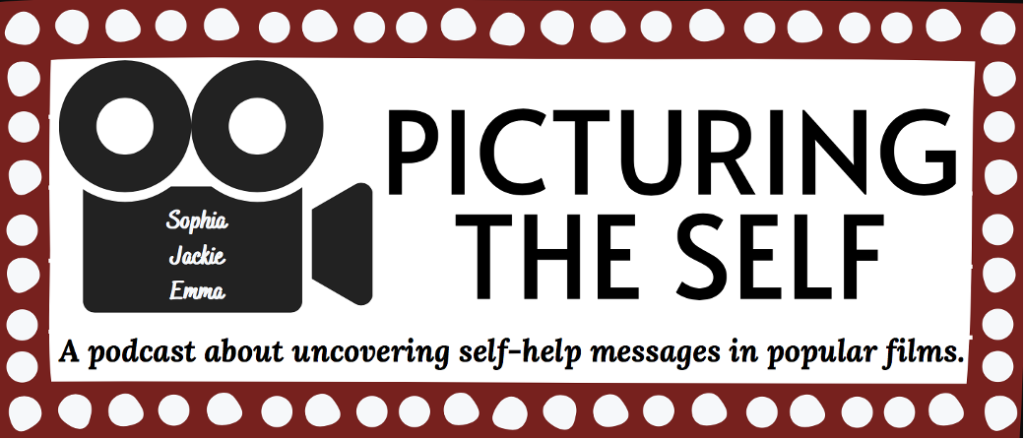Picturing the Self Podcast: Inside Out

In Picturing the Self, podcasters Sophia, Jackie, and Emma break down popular films into self-help tips. Movies play such a big role in our lives, such as letting us explore unknown worlds, follow interesting characters, and escape from our own daily lives for a few hours. But, the lesser known function of movies is how they shape us into certain kinds of people. This podcast serves to uncover those self-help messages and produce actionable steps for viewers. Today’s episode will explore the 2015 Pixar animated film Inside Out and its key takeaways on emotions and mental health that will help you cultivate a more fulfilling life.
Show Notes









Further Reading / Viewing
Holmes, Linda. “Why The Key Character In ‘Inside Out’ Is The One Who Isn’t There.” NPR, NPR, 19 June 2015.
Marsh, Jason, and Vicki Zakrzewski. “Four Lessons from ‘Inside Out’ to Discuss With Kids.” Greater Good, July 2015.
ScreenSlam. “Pixar’s Inside Out: Director Pete Docter Movie Interview | ScreenSlam.” YouTube, YouTube, 10 June 2015.
Citations of Mentioned Texts / Film
Binkley, Sam. “Happiness, Positive Psychology and the Program of Neoliberal Governmentality.” Subjectivity, vol. 4, no. 4, 2011, pp. 371–394., doi:10.1057/sub.2011.16.
Dickens, Charles. Great Expectations. Wordsworth Editions, 1992.
Dobbs, David. “Teenage Brains.” National Geographic Magazine, National Geographic, 10 Oct. 2011.
Docter, Pete, and Ronnie Del Carmen. Inside Out. Walt Disney Studios Motion Pictures, 2015.
Heti, Sheila. How Should a Person Be? Toronto: House of Anansi Press, 2010.
Marcuse, Herbert. “The Affirmative Character of Culture.” Art and Liberation, 2007, pp. 88–118, doi:10.4324/9780203966617-8.
Smiles, Samuel. Self-Help. Belford, Clarke & Co, 1883.
Yong, Ed. “Unconscious Brain Activity Shapes Our Decisions.” Science, National Geographic, 10 Feb. 2021.
Citations of Images
(in the order they appear in this episode, excluding the logo image; all film screenshots are credited to the movie and the film citation is listed last)
“File:Inside Out (2015 Film) Poster.jpg.” Wikipedia, Wikimedia Foundation, 24 Aug. 2019.
“Great Expectations.” Wikipedia, Wikimedia Foundation, 10 Apr. 2021.
“Self-Help by Samuel Smiles.” The British Library, The British Library, 6 Feb. 2014.
Watts, James. World Scene Writer. “Books: How Should a Person Be by Sheila Heti Is Experimental Prose.” Tulsa World, 20 Feb. 2019.
“Herbert Marcuse.” Wikipedia, Wikimedia Foundation, 11 Apr. 2021.
Docter, Pete, and Ronnie Del Carmen. Inside Out. Walt Disney Studios Motion Pictures, 2015.
Transcript
Available for download here.